Genres Country Name Stan Coster Labels Gidgee Records | Years active 1956–1996 Instruments Vocals, guitar Role Singer | |
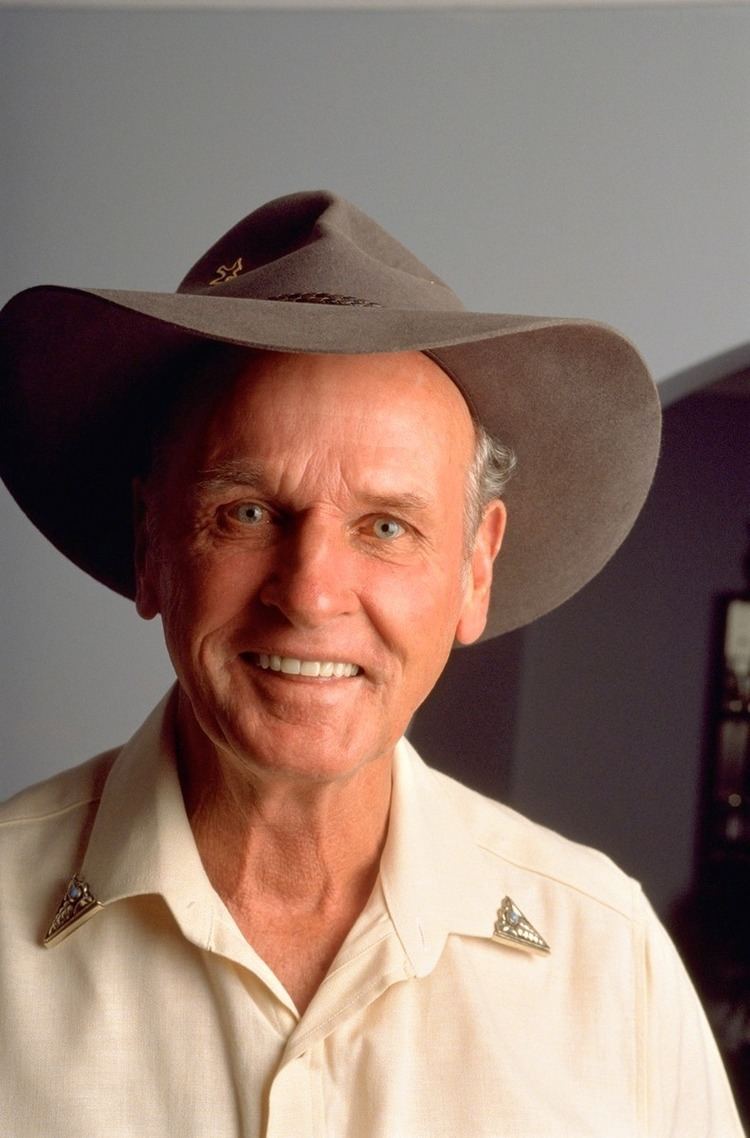 | ||
Occupation(s) Singer-songwriter, musician, rough rider, construction worker, station hand Albums The Original Stan Coster Volume 2, The Original Stan Coster Volume 1 People also search for Slim Dusty, Anne Kirkpatrick, Mary Kirkpatrick, David Kirkpatrick | ||
Stan coster the loaded dog
Stan Coster OAM (27 May 1930 – 25 March 1997) was an Australian country music singer-songwriter. His songs were regularly performed by Slim Dusty and other singers. He is the father of country music singer Tracy Coster.
Contents
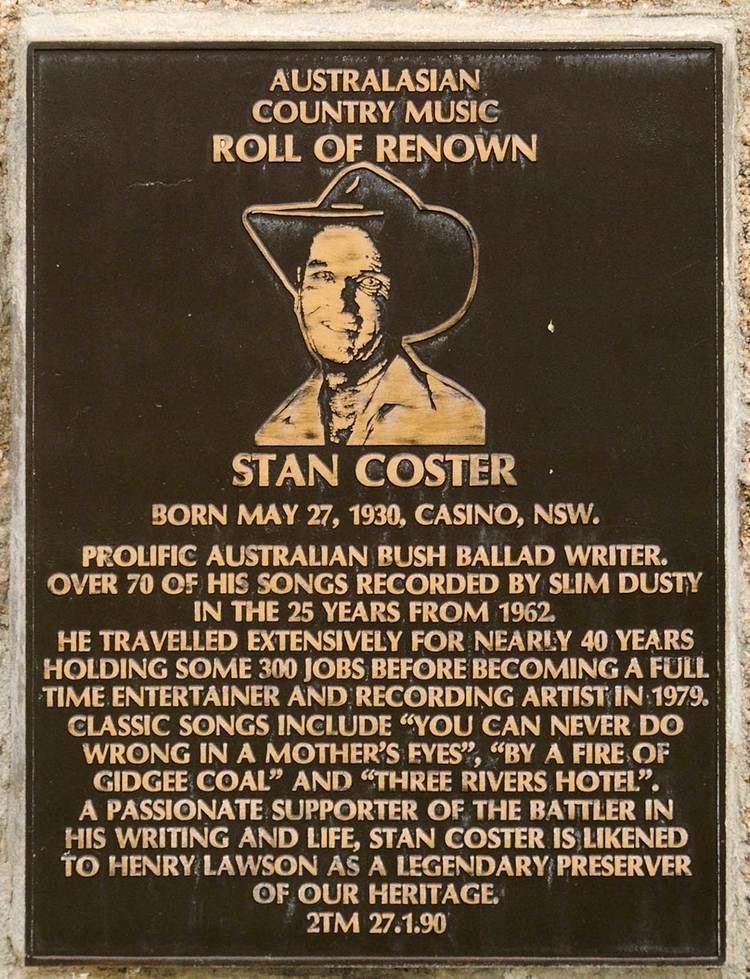
Stan coster by a fire of gidgee coal
Life and career
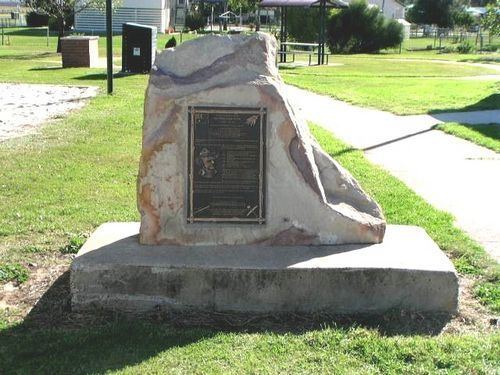
Stan Coster was born at Casino on the north coast of New South Wales, Australia in 1930. One of seven children, each of whom were musically talented. He left school at the age of 14 and worked for a local butcher in Woolgoolga, NSW. By the age of 16, he was cutting sleepers for train tracks and at 18 years of age he went to work as a station hand before moving to Sydney and in 1948 moved to Cooma, New South Wales, to work on the Snowy Mountains Scheme.
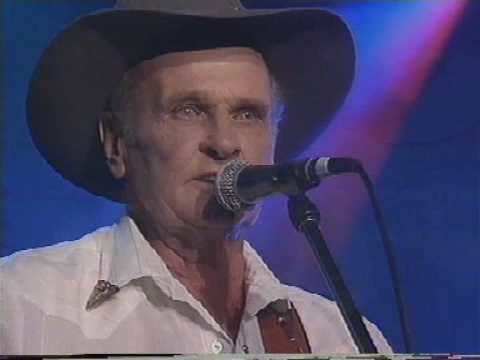
In 1950, at age 20, Coster joined a travelling rodeo as a rough rider and in 1951 he married Dorothy Aileen Milto, with whom he had three children, including country music singer Tracy Coster.
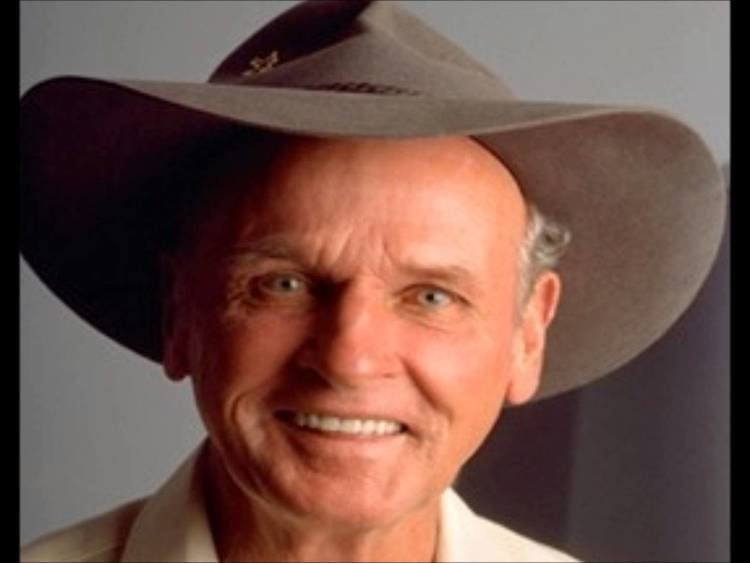
In 1956, Coster began writing songs and met Slim Dusty in 1960 at Longreach, Queensland. Dusty recorded his first Coster song, “Return of the Stockman” in 1962. Dusty went on to record another 70 of Stan Coster tracks. In 1977, Coster won the Golden Guitar for APRA Song of the Year with his composition “Three Rivers Hotel”, recorded by Slim Dusty. While on the land Coster worked as a ringer, fencer, slaughterman, horse-breaker, kangaroo shooter, and shed hand and was able to draw these experiences into his bush ballads. Popular compositions such as his "Three Rivers Hotel", which tells the story of building a train line into a remote nickel mine, were based on his own life experiences and brought to popular attention through performances and recordings by Slim Dusty and other artists.
In later life, Coster moved to Tamworth, New South Wales and then to nearby Manilla. In the late 1970s, where he began his singing career at Joe Maguire's Pub (now known as the Tatersall's Hotel). He appeared in the 1984 feature film The Slim Dusty Movie and in that year formed his own record label, “Gidgee Records”.
In 1987, Coster won another Golden Guitar for APRA Song of the Year for “He’s a Good Bloke When He’s Sober”. In 1989 he was awarded an OAM for "Services to Country Music" and was in 1990 inducted into the Roll of Renown at Tamworth. He won the 1995 Golden Guitar (Heritage Award) for Bush Ballad Song of the Year with “Lawson’s Loaded Dog” and in 1996 released his last album “Come Back to the Bush”.
Stan Coster died from cancer on 25 March 1997 at Manilla. A Bronze bust featuring his image was unveiled in Tamworth’s Bicentennial Park in 1999.
Other than Dusty - Buddy Williams, Joy McKean, John Williamson, Gordon Parsons and many other music artists have performed Stan Coster songs. Coster's daughter, Tracy Coster released a tribute album to her father in 2004, entitled "Coster Country" which also featured duet performances with John Williamson, Adam Harvey, Lee Kernaghan and Anne Kirkpatrick.
In 2005, a statue of the "Cunumulla Fella" was unveiled in Cunnamulla, Queensland in tribute to Dusty and Coster and to the iconic song of that name performed by Dusty with lyrics by Coster. The song recalls Coster's days working as a sheep-shearing "ringer" around Cunnamulla in the 1950s. Dusty recorded the song and it became an enduring country music hit, later covered by Lee Kernaghan. The statue was unveiled by country music personalities Anne Kirkpatrick (Dusty's daughter), Jayne Kelly and Tracy and Russell Coster.
